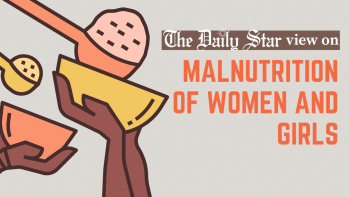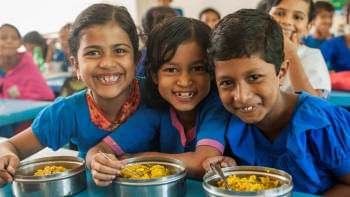Why couldn’t we eliminate child stunting?

Bangladesh has set a target to become a higher middle-income country by 2031 and a developed country by 2041, but we wonder how that dream will come true when a large percentage of our children still remains undernourished. According to Right2Grow Consortium Bangladesh, around 28 percent children aged under five are stunted in the country, while 24 percent are underweight and 12 percent are "wasted." A 2022 Unicef report ranked Bangladesh fifth among countries with severely malnourished children. Given the alarming statistics, we must ask: why have the government programmes undertaken in the past decades to reduce malnutrition among children failed so miserably?
According to the WHO, "stunting" means low height-for-age due to chronic or recurrent undernutrition, while "wasting" is low weight-for-height due to inadequate food intake or prolonged illnesses. Both stunting and wasting are usually associated with poverty, poor maternal health and nutrition, and inappropriate feeding and care in early life. So, to address them, a lot of other related issues need to be addressed.
To reduce child stunting and wasting rates, our approach towards women's health and nutrition needs to change drastically, while child marriage must be stopped once and for all.
First and foremost, the nutrition deficiency in women of reproductive age must be eliminated, because only a healthy woman can give birth to a healthy child. But a Why couldn't we eliminate child stunting? conducted last year found that about 1.7 crore women, aged 15-49 years, suffer from malnutrition in the country. Moreover, the increasing number of child marriages taking place in the country means that we might see more babies born with low birth weight and nutritional deficiency. Therefore, to reduce the child stunting and wasting rates, our approach towards women's health and nutrition needs to change drastically, while child marriage must be stopped once and for all.
The government also needs to have a specific allocation in our national budget for nutrition. Reportedly, in the 2022-23 fiscal year, only 5.43 percent of our total budget was allocated to the health sector, with no specific allocation for nutrition. We would also like to know whether the ready-to-use therapeutic food (RUTF), which is rich in protein and micronutrients and developed by our scientists, is being used to treat children with acute malnutrition. If not, the use of it needs to be spread across the country. Last but not the least, the government needs to take a holistic approach to reduce the number of stunted children in the country.


 For all latest news, follow The Daily Star's Google News channel.
For all latest news, follow The Daily Star's Google News channel. 









Comments